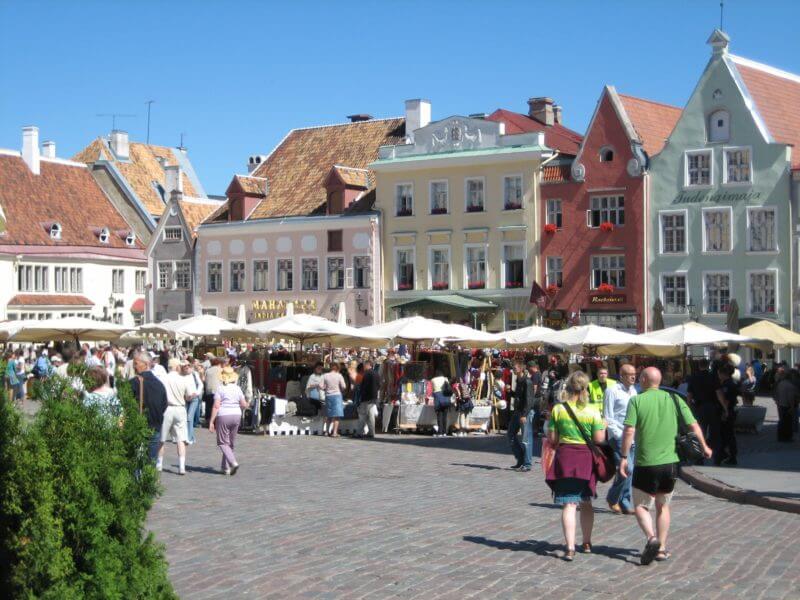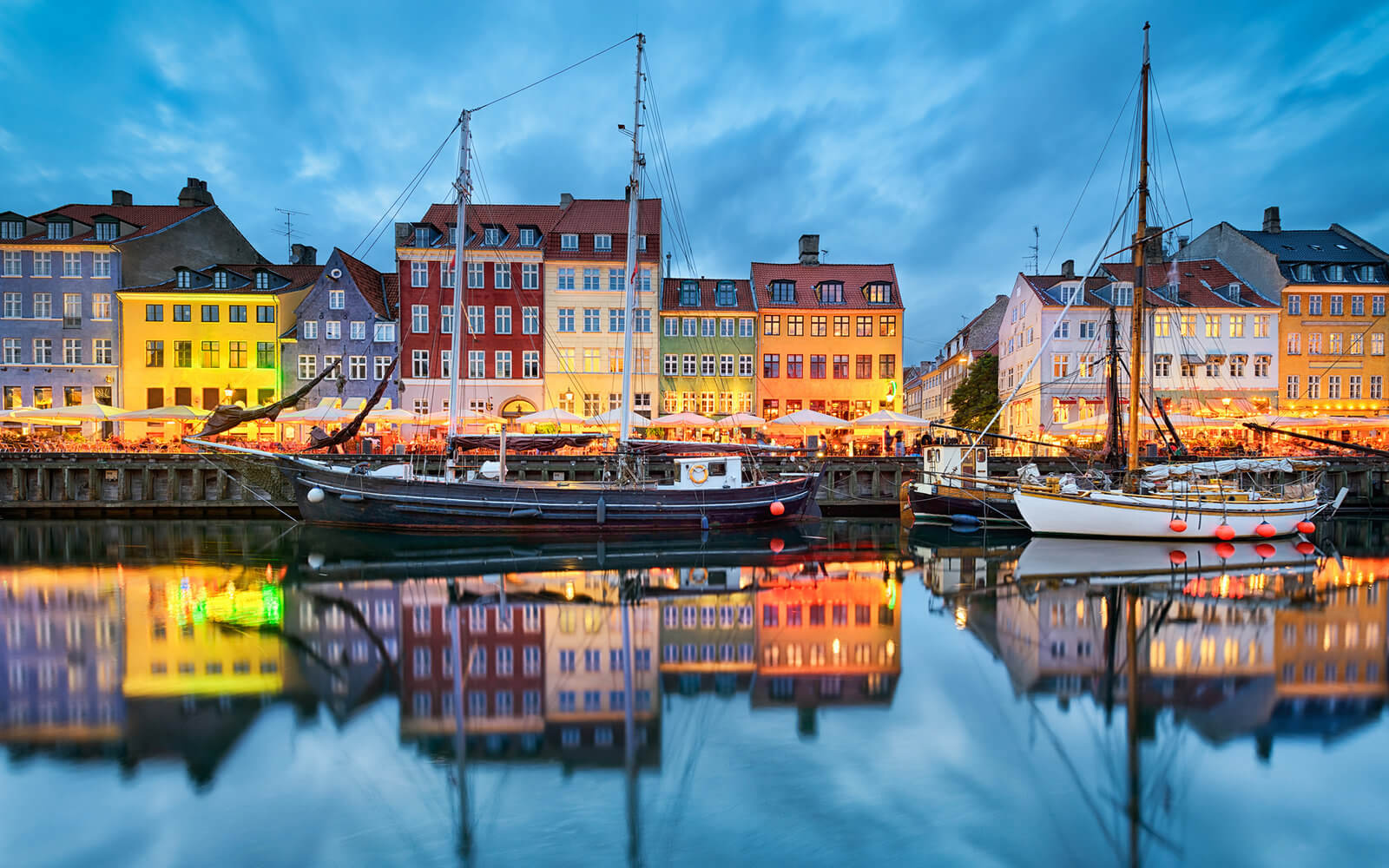The EPI takes into account a number factors directly associated with the environment such as air pollution and water sanitation and combines them to come up with a solid number to mark the environmental state in countries. Fifty percent of the variables pertain to environmental health while the other half involves ecosystem vitality.
2017 is now drawing to a close. Let’s take a look once again at the countries comprising the top 10 cleanest countries in the world based on data collected for 2016. Which of these countries will remain in the top 10 and which will fall off the list when the next set of data arrives?
1. Finland

Finland sits at the top of the list with a 90.68 EPI score. It is often considered one of the best countries to live in. It is known for having excellent air quality with minimal air pollution and for using environment-friendly energy resources. Finnish folks have very low chances of falling ill due to environmental risks because of the level of cleanliness in the Nordic country.
Finland ranks fourth in Health Impacts, 18th in Air Quality, 26th in Water and Sanitation, 18th in Water Resources, eight in Fisheries, 19th in Biodiversity and Habitat, and 18th in Climate and Energy. However, Finland ranks really low in regard to Forests, checking in at a paltry 106th – the country has long-standing issues with logging.
2. Iceland

Like Finland, Iceland has great air quality. It has strict policies when it comes to smoking, most especially inside enclosed public places. In 2007, the government banned everyone from smoking in places such as bars and restaurants. Not many people openly smoke and walk around outside as well, which translates to minimal air pollution and cigarette butts on the streets.
Iceland isn’t blessed with forests, so no marks for it in the Forests category. In fact, only less than 2 percent of Iceland is covered with trees or forests, courtesy of the Vikings who decided to chop down all trees in sight about 10 minutes after they arrived. The lack of forests severely affected its ranking in Biodiversity and Habitat, scoring only 66.04, which is only good for 129th.
In other categories, Iceland ranks third in Health Impacts, fourth in Air Quality, 20th in Water and Sanitation, and third in Climate and Energy. Overall, Iceland has an EPI score of 90.51.
3. Sweden

Sweden, another Nordic country, checks in at third place. A lot of people might argue that it should be at the top of this list. Sweden is one of the most beautiful places on earth, with garbage-free streets, minimal air pollution, and sanitary facilities everywhere you go.
Sweden is known for its policies on recycling trash – the country is a master at recycling. It is so good at recycling trash that it imports trash from other countries in order to keep its incredibly effective recycling system running. And naturally, the country is also adept at utilizing renewable energy sources.
Sweden ranks fifth in Health Impacts, 22nd in Air Quality, 16th in Water and Sanitation, 12th in Water Resources, first in Agriculture (tied), and 10th in Climate and Energy. Overall, Sweden checks in with a 90.43 EPI score.
4. Denmark

Next up we have Denmark, yet another Nordic country. With four of the top spots occupied by Finland, Iceland, Sweden, and Denmark, the list might as well have been about the cleanest Nordic countries. Denmark has an 89.21 EPI score, making it the only Nordic country with a below-90 EPI score on this list.
Yes, we just spoiled that Norway isn’t included in the top 10 cleanest countries in the world, which might sound incredulous to some.
Denmark is also known for placing more emphasis on renewable energy sources than traditional sources. It ranks 14th in Health Impacts, 12th in Water and Sanitation, 13th in Water Resources, 17th in Biodiversity and Habitat, and 24th in Climate and Energy.
5. Slovenia

Sandwiched by Italy, Austria, Hungary, and Croatia, Slovenia is a gorgeous country filled with breathtaking mountain landscapes. But the mountains aren’t the only impressive things about Slovenia – the entire country, in general, is a picture of cleanliness and sanitation.
Towns and cities in Slovenia are well-kept, making it a joy to walk around in the streets as a tourist. In 2010, Slovenia made headlines when an environmentalist organization, Ecologists Without Borders, arranged a project to remove tons of solid waste from illegal landfills in the country. Over 200,000 volunteers showed up and removed 12,000 tons of waste. The organization did it again in 2012 with a similar positive result.
Slovenia is often called one of the most unheralded European countries. Because of the country’s geographical structure, Slovenia ranks high in Biodiversity and Habitat and Forests, placing first and 15th, respectively, in those categories. Overall, Slovenia has an 88.98 EPI score.
6. Spain

Spain is one of the most beautiful countries in the world, though travelers are often advised to stay away from Madrid and other big cities for the best experience. Because while Spain is considered one of the cleanest countries in the world, big cities such as Madrid aren’t really the best samples.
Spain had serious issues with air pollution in the past. But the government has done a good job in lowering air pollution in recent years. The government is also committed to climate change policies, clean energy, and clean water resources nationwide.
Spain ranks 24th in Health Impacts, 33rd in Air Quality, ninth in Water and Sanitation, eight in Water Resources, and 20th in Biodiversity and Habitat. Overall, the country ranks sixth with an EPI score of 88.91.
7. Portugal

Kind of funny that Spain and Portugal are also next to each other on this list. For those unfamiliar, the two countries sit right next to each other on the map, with Portugal being the smaller nation of the two.
Portugal has better air quality than Spain and has a more efficient system for renewable energy utilization. It has one of the largest solar power plants in the world, the Moura Photovoltaic Power Station, and houses the first ever commercial wave power farm, the Agucadoura Wave Farm. The country also puts wind power to good use. Electricity is never a problem in Portugal.
Portugal ranks 13th in Health Impacts, 21st in Air Quality, 11th in Water and Sanitation, first in Agriculture (tied), 22nd in Biodiversity and Habitat, and 16th in Climate and Energy. Overall, Portugal has an EPI score of 88.63.
8. Estonia

With an estimated population of 1.3 million, Estonia is one of the least populated European countries. It is a well-developed country with an excellent healthcare and education system. And despite leaning heavily on oil shale, which is a major source of pollution, for electricity, Estonia is considered one of the cleanest countries in the world.
Because of the abundance of oil shale in the country, the Estonian government isn’t too invested in clean and renewable energy resources. In terms of cleanliness on the street level, Estonia gets top marks, with most places generally free of trash. Of course, the low population plays a big part in that – more populous countries tend to have more trash in cities and towns.
Estonia ranks 10th in Health Impacts, 24th in Air Quality, 34th in Water and Sanitation, 25th in Water Resources, first in Agriculture (tied), and first in Biodiversity and Habitat (tied). The country ranks 58th in Climate and Energy, mostly because of its oil shale industry. Estonia has an overall score of 88.59 EPI, barely missing out on the seventh spot.
9. Malta

Malta is one of the smallest and most densely populated countries in the world, with an estimated population of about 450,000. It is one of the most popular tourist destinations in Europe, courtesy of its pristine beaches.
The Maltese government has been placing more effort into taking care of the environment in recent years, which is why Malta is now included in the top 10 cleanest countries list. Though not exactly spotless, most of the locations in the country are well-kept and have good air quality.
Malta ranks 11th in Air Quality, first in Water and Sanitation, 29th in Water Resources, sixth in Fisheries, and 29th in Climate and Energy. The fact that the country ranks high in water-related categories isn’t really surprising. Overall, Malta has an EPI score of 88.48.
10. France

Last on our list of the top 10 cleanest countries in the world is France, one of the most industrialized European countries. France has been relying on nuclear energy for electricity for years, which is why it ranks low when it comes to carbon dioxide emissions.
However, the air quality in the entire nation isn’t really the cleanest, especially in Paris and other big cities. But like most European countries, France is committed to making the earth great again by promising to cut carbon dioxide emissions even more by 2020.
France ranks 37th in Health Impacts, 21st in Water and Sanitation, 21st in Water Resources, 31st in Fisheries, and 10th in Biodiversity and Habitat. It has an overall EPI score of 88.20, edging out New Zealand by a hair and barely making it into the top 10.
The following countries round out the top 20 cleanest countries in the world: New Zealand (88.00), United Kingdom (87.38), Australia (87.22), Singapore (87.04), Croatia (86.98), Switzerland (86.93), Norway (86.90), Austria (86.64), Ireland (86.60), and Luxembourg (86.58).



